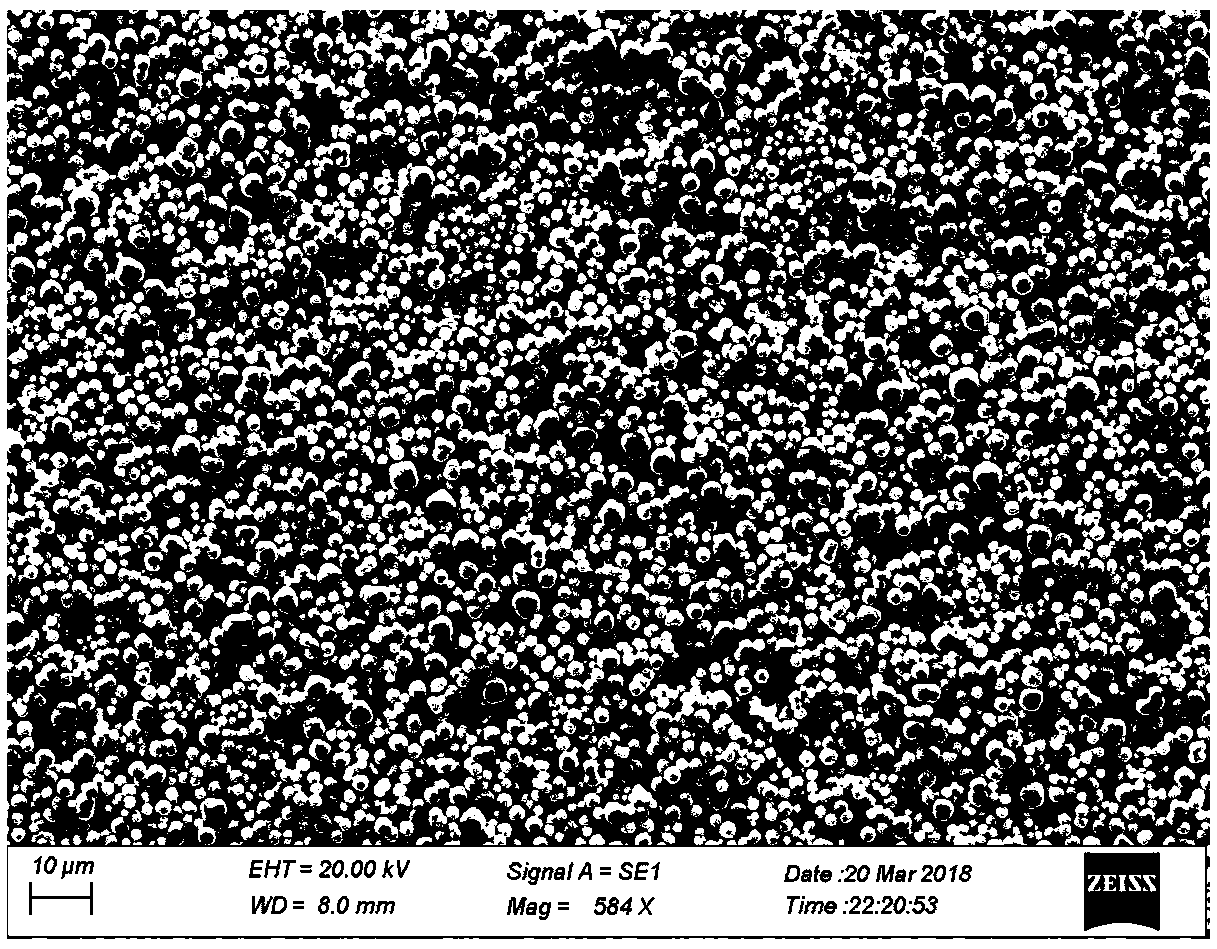Method for preparing rapid detection element of biological hydrogen sulfide
A detection element, hydrogen sulfide technology, applied in the direction of measuring devices, nanotechnology for materials and surface science, instruments, etc., can solve the problems of expensive detection costs, complicated instrument operation, heavy instruments, etc., to achieve short detection time, preparation Simple, long-lasting effect
- Summary
- Abstract
- Description
- Claims
- Application Information
AI Technical Summary
Problems solved by technology
Method used
Image
Examples
Embodiment 1
[0025] The preparation method of described biological hydrogen sulfide rapid detection element comprises the following steps:
[0026] Add 0.450g of copper acetate and 3.981g of triethanolamine to a solution of 64mL of absolute ethanol and 96mL of water, put it on a magnetic stirrer and stir for 12min until the solution turns dark blue, add 0.052g of sodium hydroxide and 2.235 gPVP, after stirring for 13 minutes, add 5.374ml of glucose solution with a concentration of 1mol / L, and continue to stir, and then react the stirred solution at a constant temperature of 90°C for 7 hours to obtain cuprous oxide nanomaterials. Aqueous solution of copper nanomaterials.
[0027] Take the detection substrate, drop 0.007g / mL cuprous oxide nanomaterial aqueous solution into the detection tank 1 of the detection base, let it dry naturally at room temperature, and then drop 0.04g / mL polyvinyl alcohol solution into the detection tank 1 to cover the oxidation. Cuprous nanomaterials, and then put...
Embodiment 2
[0030] The preparation method of described biological hydrogen sulfide rapid detection element comprises the following steps:
[0031] Add 0.4g of copper acetate and 3g of triethanolamine to a solution of 64mL of absolute ethanol and 96mL of water, put it on a magnetic stirrer and stir for 10min until the solution turns dark blue, add 0.051g of sodium hydroxide and 2.1g of PVP under stirring conditions After stirring for 10 minutes, 5.3ml of glucose solution with a concentration of 1mol / L was added, and the stirring was continued. Then, the stirred solution was reacted at a constant temperature of 87°C for 6.5 hours. After washing, an aqueous solution of cuprous oxide nanomaterials was prepared.
[0032] Take the detection substrate, drop 0.002g / mL cuprous oxide nanomaterial aqueous solution into the detection tank 1 of the detection base, let it dry naturally at room temperature, and then drop 0.02g / mL polyvinyl alcohol solution into the detection tank 1 to cover the oxidation...
Embodiment 3
[0035] The preparation method of described biological hydrogen sulfide rapid detection element comprises the following steps:
[0036] Add 0.5g of copper acetate and 4g of triethanolamine to a solution of 64mL of absolute ethanol and 96mL of water, put it on a magnetic stirrer and stir for 15min until the solution turns dark blue, add 0.055g of sodium hydroxide and 2.3g of PVP under stirring conditions , after stirring for 15 minutes, add 5.5ml of glucose solution with a concentration of 1mol / L, and continue to stir, then react the stirred solution at a constant temperature of 92°C for 7.5 hours, wash it and prepare an aqueous solution of cuprous oxide nanomaterials.
[0037] Take the detection substrate, drop 0.01g / mL cuprous oxide nanomaterial aqueous solution into the detection tank 1 of the detection base, let it dry naturally at room temperature, and then drop 0.06g / mL polyvinyl alcohol solution into the detection tank 1 to cover the oxidation. Cuprous nanomaterials, and ...
PUM
| Property | Measurement | Unit |
|---|---|---|
| Width | aaaaa | aaaaa |
| Length | aaaaa | aaaaa |
| Depth | aaaaa | aaaaa |
Abstract
Description
Claims
Application Information
 Login to View More
Login to View More - R&D
- Intellectual Property
- Life Sciences
- Materials
- Tech Scout
- Unparalleled Data Quality
- Higher Quality Content
- 60% Fewer Hallucinations
Browse by: Latest US Patents, China's latest patents, Technical Efficacy Thesaurus, Application Domain, Technology Topic, Popular Technical Reports.
© 2025 PatSnap. All rights reserved.Legal|Privacy policy|Modern Slavery Act Transparency Statement|Sitemap|About US| Contact US: help@patsnap.com



